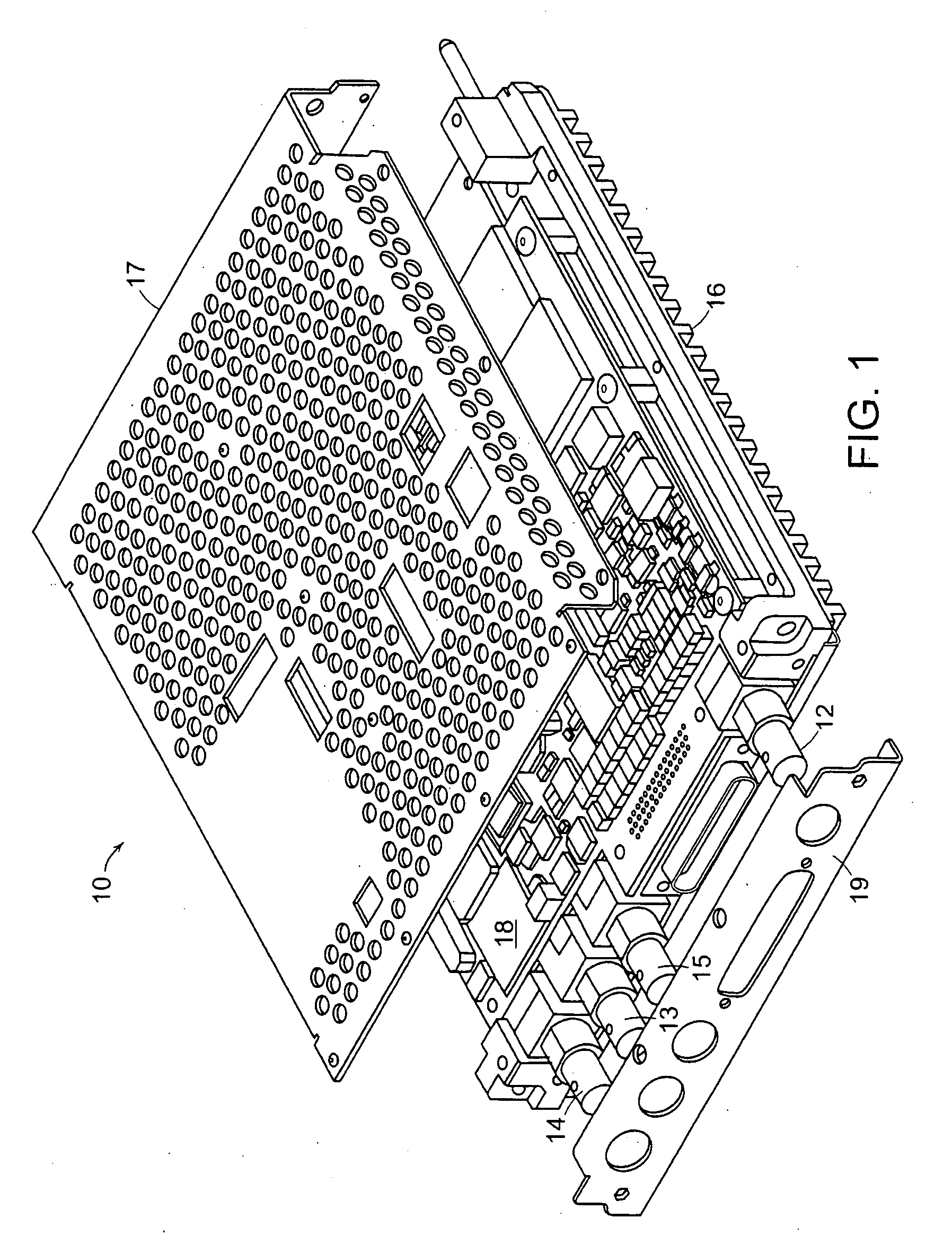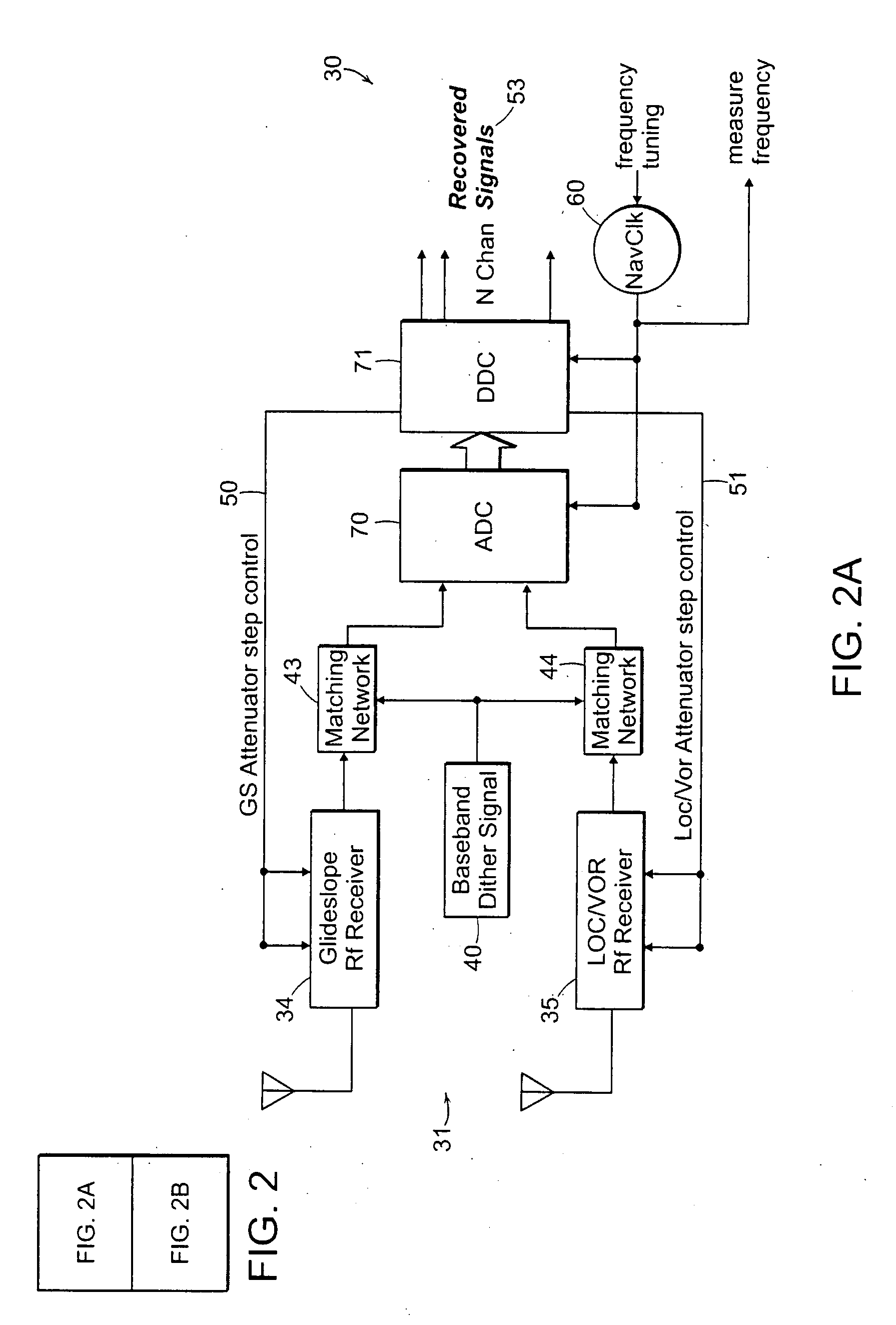Direct digital sampling method for radios
a radio and digital sampling technology, applied in the direction of digital-analog converters, electrical equipment, code conversion, etc., can solve the problems of direct sampling method limitations, jitter error directly affecting the dynamic range of the digitizing device, and the cost of such high-quality adc devices would override the cost savings made in the rf section, so as to reduce cross-coupling, reduce cross-coupling, and improve the effect of acp
- Summary
- Abstract
- Description
- Claims
- Application Information
AI Technical Summary
Benefits of technology
Problems solved by technology
Method used
Image
Examples
Embodiment Construction
[0033]A description of example embodiments of the invention follows.
[0034]FIG. 1 illustrates a NAV / COMM radio embodiment of the present invention, referred to herein by the general reference numeral 10. The NAV / COMM system 10 comprises an antenna port for a VHF transceiver 12, an antenna port for a Localize / VOR receiver 13, an antenna port for a Glide Slope receiver 14, and an antenna port for a Marker Beacon receiver 15. The NAV / COMM system 10 also comprises circuitry 18 needed to signal process the RF receiver and transceiver signals. The circuitry 18 is enclosed in a chassis consisting of a metal heat-sink backplate 16, an RF shield cover plate 17, and an RF shield front plate 19.
[0035]FIG. 2 illustrates an example receiver and transceiver embodiment of the present invention, referred to herein by the general reference numeral 30. It should be appreciated that other receiver and / or transceiver combinations may be employed in the NAV / COMM system. The NAV / COMM receiver and transcei...
PUM
 Login to View More
Login to View More Abstract
Description
Claims
Application Information
 Login to View More
Login to View More - R&D
- Intellectual Property
- Life Sciences
- Materials
- Tech Scout
- Unparalleled Data Quality
- Higher Quality Content
- 60% Fewer Hallucinations
Browse by: Latest US Patents, China's latest patents, Technical Efficacy Thesaurus, Application Domain, Technology Topic, Popular Technical Reports.
© 2025 PatSnap. All rights reserved.Legal|Privacy policy|Modern Slavery Act Transparency Statement|Sitemap|About US| Contact US: help@patsnap.com



